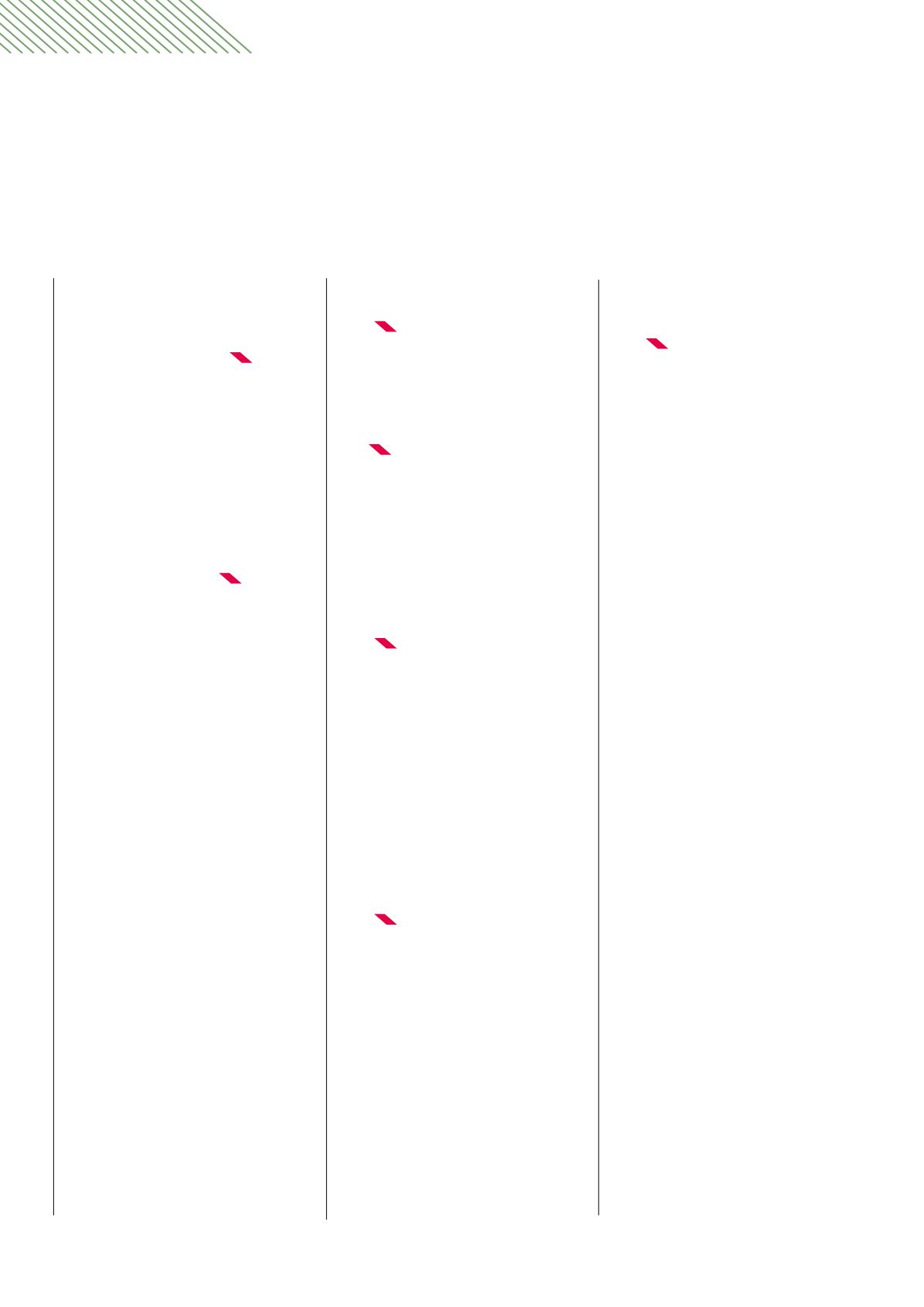

\\
3
How does Cofinimmo stimulate the
innovation spirit of its employees in the
area of sustainability?
J.-E.C.
We set up working groups
composed of twelve people in the
company who meet every two years
during four months. Their mission is
to identify innovative elements within
our products, namely buildings and
related services. However, innovation
can also emerge from the company's
different departments. Afterwards, the
proposed ideas are implemented. In
this way, sustainable alternatives for
traditional offices, such as Flex Corners®
and Lounges® were created for a new
generation of tenants.
The notion of sustainability in renova-
tions or new constructions is the prime
concern for Cofinimmo. How do you
differentiate yourself in this regard?
Jean-Edouard Carbonnelle
We are
active on several fronts: sustainability,
in the broad sense, and environmental
protection. Real estate is a large energy
consumer. When Cofinimmo thinks about
energy, it concerns not only consumption
but also a building’s overall life cycle. 74 %
of the energy used for new constructions
is directly related to the building’s
materials. We keep this fact in mind when
considering sustainability of buildings
we bring onto the market. This is an
automatism within our teams.
Jacques van Rijckevorsel
Our
reflexions cover three elements: the real
estate concept, its location included,
sustainability (in particular, through the
selection of materials) and its recycling.
We approach this last element in the
same way as the automotive market
where each part of a car needs to be
recyclable. When we refurbish or convert
a building for other usage, we make our
best efforts to mitigate the environmental
impact of our activities, in the field of
both our buildings’ performance and
the recycling of materials used in our
buildings’ refurbishment.
What are Cofinimmo’s practices to limit
its environmental footprint?
J.-E.C.
Whatever its age, one can
always apply small changes to improve a
building’s energy balance. We pay extra
attention to this fact. Motion detectors
connected to the lighting system is
a good example of a cheap but very
profitable investment.
J.v.R.
In addition to maximise
buildings’ energy performance, which we
focus on, we also seek to give a second life
to materials and equipment of buildings
we refurbish. In this context, we work
together with a number of companies
and associations.
In consequence, Cofinimmo’s future is
based on the life cycle axis, an approach
to give an obsolete building new life.
How does this work?
J.-E.C.
Sometimes, the use of our
buildings evolves. This is also part of
their life cycle. When a neighbourhood
changes or when opportunities to
complement them arise, we convert our
buildings for another use. We reallocated,
for example, an office building in Woluwe-
Saint-Lambert/ Sint-Lambrechts-Woluwe
into a nursing and care home. We make
every effort to keep construction elements
in the building and try to find new market
opportunities for materials that don't fit
into the building’s refurbishment.
What role does a company like
Cofinimmo play in the future of urban
centres?
J.-E.C.
Cities are changing constantly.
Our role is to improve the citizens’ quality
of life by developing green areas and
shared or assembly areas. The actual
trend is to create mixed spaces within
premises, such as a combination of shops,
offices, hotels. Cities such as Paris, London
and Amsterdam gave the example and
Brussel should follow. The optimal city
theme is at the heart of all town planners’
reflections. Debate topics comprise the
ideal distance or the increase in height
rather than in width.
“WE ASSESS THE
ENERGY CONSUMED
DURING THE BUILDING'S
OPERATION, BUT ALSO
THE ONE USED FOR
ITS CONSTRUCTION
AND, ONE DAY, FOR ITS
DEMOLITION.”
JEAN-EDOUARD
CARBONNELLE,
CHIEF EXECUTIVE OFFICER
















